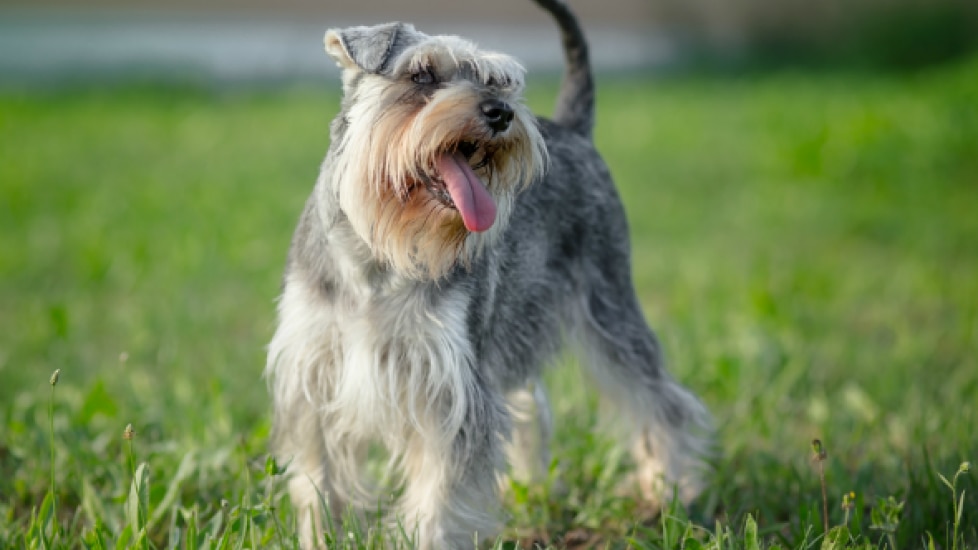Bile Duct Obstruction in Dogs
Cholestasis in Dogs
Bile, a bitter, high alkaline fluid that is secreted by the liver, serves important functions in the digestion and removal of waste materials from the body. Once bile has been formed in the liver, it is passed into the gallbladder, where it is held until food is digested. It is then released into the small intestine, both to aid in the digestion of food and to emulsify the food so that it can be used appropriately by the body, or carried out of the body as waste.
Cholestasis is a term used to denote a condition in which obstruction of the bile duct prevents the normal flow of bile from the liver to the duodenum (a part of small intestine). Cholestasis can occur due to number of underlying diseases, including diseases of the liver, gallbladder, or pancreas.
Miniature schnauzers and Shetland sheepdogs are predisposed to pancreatitis (inflammation of the pancreas) and are incidentally at higher risk for developing cholestasis. It is commonly seen in middle-aged and older dogs, but otherwise, this can be found in both male and female dogs.
Symptoms and Types
Symptoms will vary depending upon the underlying disease that is responsible for this condition. Following are several of the symptoms related to this disease:
- Progressive tiredness
- Jaundice
- Polyphagia (excessive hunger and consumption of food)
- Bleeding disorders
- Weight loss
- Pale colored stools
- Orange urine
Causes
This problem can be associated with a number of diseases. Following are few of the causes that can lead to cholestasis:
- Cholelithiasis (stones in gallbladder/gallstones)
- Neoplasia – abnormal growth of tissue, may be malignant or benign
- Pancreatitis (inflammation of the pancreas)
- Parasitic infestation
- Blunt trauma
- Side effect following abdominal surgery
Diagnosis
You will need to give a thorough history of your dog's health, onset of symptoms, and possible incidents that might have preceded this condition, such as trauma to the body. The history you provide may give your veterinarian clues as to which organs are causing secondary symptoms.
Laboratory tests will include complete blood tests, a biochemistry panel, and urinalysis. These tests will reveal abnormalities related to the underlying disease, if there is one, as well as abnormalities that are due to the bile duct obstruction itself.
Some patients show anemia and abnormalities related to the obstruction. The levels of waste products found in the blood will be indicative, like high levels of bilirubin in the blood. Bilirubin is a throw-away component of the bile and blood fluids; a reddish colored pigment that detaches from the red blood cells as they degrade. Under normal circumstances, bilirubin is secreted through the bile and discarded from the body as waste, giving feces its characteristic color. Due to the bile duct obstruction, too much bilirubin can remain in the blood, eventually leading to a condition of jaundice. Typically, urinalyses will also show high concentrations of bilirubin in the urine and stool samples will be pale in color.
Liver enzyme values may be elevated due to liver damage, and bleeding disorders are common with liver disease as well.
Any blood that is taken will be evaluated through laboratory evaluations of your dog. Abdominal x-ray and ultrasound imaging can be used to examine the interior of the liver, pancreas, and gall bladder. In some cases, where laboratory testing and other techniques are not helpful for diagnosis, exploratory surgery may be used for diagnosis. Diagnostic surgery also carries the advantage of correcting the problem at the same time if it is found in the course of discovering the underlying issues.
If your dog is found to be suffering from a form of neoplasia, an abnormal growth of tissue that is affecting the functioning ability of the bile duct, your veterinarian will need to determine whether the tissue is benign or cancerous. Further treatment will depend upon that outcome.
Treatment
Treatment is highly variable and individual, depending upon the underlying cause and severity of the disease in your dog. If your dog is dehydrated it will be given fluid therapy along with supportive therapy. In cases with bleeding disorders owing to liver disease, the cause of the bleeding must be addressed before surgery can be performed. Parenteral (by injection) antibiotics will be administered pre-surgery to handle any infections that are present. Treatment approaches include medical treatment, surgery, or both.
Living and Management
Bile duct obstruction, if not treated in time, can lead to serious complications, including severe damage to the gallbladder and liver. Follow your veterinarian's recommendations for treating and preventing a recurrence of this condition. Your dog will need special dietary restrictions while it recovers, which will be explained to you by your veterinarian. Recovery depends on treatment of the underlying cause of the obstruction, and on the bile duct being made viable for the normal outflow of bile contents. The prognosis is generally good, given that these issues are resolved.
However, in case of neoplasia, overall prognosis for recovery is very poor.
Help us make PetMD better
Was this article helpful?
